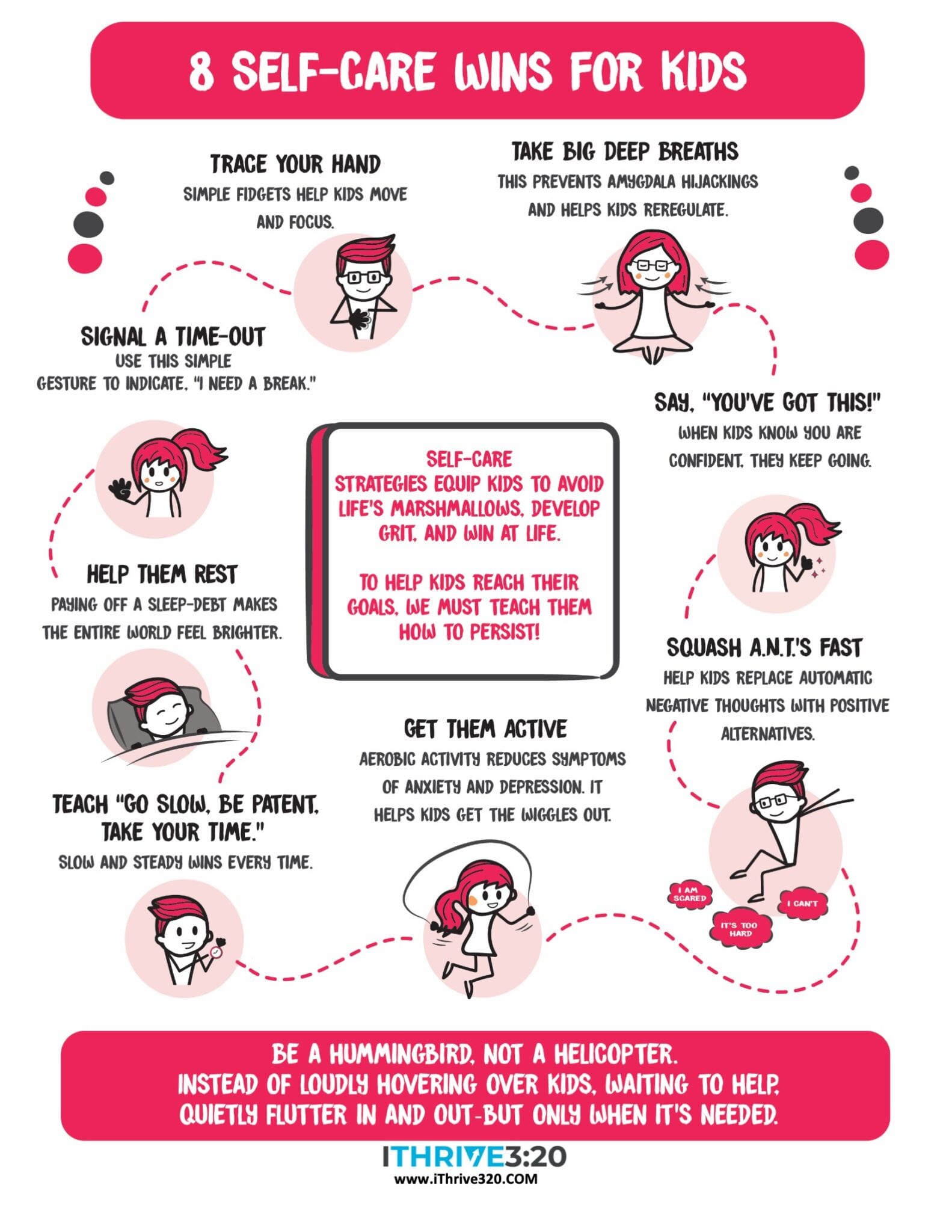August is National Wellness Month, which means the next few weeks are dedicated to improving your physical, mental, and emotional health. Your health extends beyond what you eat and how you exercise. It includes managing stress, developing healthy relationships, setting boundaries, and following your passions.
Everyone has their strengths and weaknesses when it comes the health. Some people over-commit because they don’t know how to say no – leaving them burned out. Others turn to unhealthy habits to manage stress, like over-eating or shutting down emotionally.
Your students also experience these mental and emotional health challenges. They pick up on problems their parents are working through and live through their own school and social-related stressors.
It’s time for everyone to take a step back and embrace some wellness best practices, not just for National Wellness Month, but all the time. Here are a few ways to introduce self-care activities for students to promote good mental, emotional, and physical health.

Source: IThrive3:20
1. Build Meditation Into the School Day
The school day is chaotic. Hundreds of students run down the halls, jostle through the cafeteria, and try to keep up with the packed curriculum teachers need to work through. Students in all grade levels can feel overwhelmed throughout the day, which can cause them to disengage and act out.
A growing number of studies continue to prove that students perform better when they have space for meditation. This is a quiet, calm environment to clear the brain and take control of your emotions. Some schools are considering replacing detention with meditation to create space for students to calm themselves and collect their thoughts.
There are multiple ways to incorporate meditation in your classroom. Middle school and high school teachers can spend the first five minutes of each period in quiet reflection. Elementary school teachers can choose key moments during the day to help students center themselves – ideally before a test or after a high-energy activity like recess.
2. Use Art Therapy for Student Check-Ins
Many self-care activities for students can be completed each day without taking up too much class time. For example, your students can start each day by choosing an emoji that expresses how they feel. Choosing an image helps your students recognize their emotions in pictures and then you can help them apply words to describe them. You might want to check in on students one-on-one if they choose sad, angry, or distressed emojis.
There are other ways to use art to express emotions. You can dedicate five minutes to free drawing or coloring to allow students to express themselves. They can use these drawings to show how they are feeling that day and explain why they chose certain colors, shapes, and styles.
3. Get Students Moving
It’s hard for students to sit still all day, even with breaks to change classrooms and attend recess. Your kids want to move, which is why they keep fidgeting around their desks and losing focus on the lesson.
You can combine movement with self-care activities for students. For example, start each history or reading lesson with a song that reflects the theme for the day. Let students get up and dance to express themselves to the music.
You can also allow students to stretch in between subjects or ahead of a test. Encourage them to practice deep breathing throughout this activity, which can calm them while they go through a couple of basic yoga positions. This can prepare them to settle into the lesson. Even a few more minutes of moving each day can improve the classroom experience.
4. Laugh and Embrace Silliness
Is there anything better than a fit of laughter that leaves you crying and holding your sides? Your self-care activities for students don’t have to focus on creating calmness. You can let your students laugh, joke, and embrace their inner silliness. You know, kid stuff.
There are countless wellness benefits of laughing. A few reasons to laugh frequently (according to the Mayo Clinic) include:
- It releases endorphins. These are the feel-good hormones that fight depression and make you happy.
- It stimulates your organs. Laughter causes you to take several deep breathes that pump oxygen to your lungs, heart, brain, and muscles.
- Laughter cools your stress response. It calms you down and lowers your heart rate.
- Laughter can reduce tension, both emotionally and physically.
In the long-run, laughter can improve your mood and even boost your immune system. So how do you get your students to laugh? There are hundreds of classroom games online that can let students laugh and play. You might be surprised how a few planned breaks for laughter throughout the day change your classroom experience.
5. Allow Downtime and Recreational Breaks
Most kids don’t get to go home and play after school. They have homework, chores, sports teams, clubs, and other activities that take up their time. On average, students report doing 2.7 hours of homework each weeknight and 3.0 hours of homework on weekends.
While you can’t control the homework that other teachers assign during National Wellness Month or the activities that students sign up for, you can encourage students to take some downtime during the week and allow for it within your class. For example, you might develop “No Homework Wednesdays” to give students a break from your class once a week. You can also look for enjoyable activities related to lessons for your students to complete.
Today’s adults have a hard enough time establishing a work-life balance. They stay late in the office and check their work emails at home. Students that establish boundaries at a young age can hold on to them in adulthood.
Explore Different Self-Care Activities for Students During National Wellness Month and Beyond
As you can see, there are multiple ways to provide self-care activities to your students. You can make meditation part of your daily classroom experience or use art to help your students express themselves. The skills they build today can help them in future stressful situations throughout life. You might be surprised to hear that your students followed your best practices for self-care in their homes.
Try a few of these activities to support students or your own self-care ideas to see what works. Monitor the progress of your students to see if they are better focused and behaved after embracing these self-care techniques.



